Cake Baking tips, though simple but plays a crucial role in baking a perfect cake. A good recipe is indeed important but along with it, it is the little tips that make it a hit or flop!
Go through the tips mentioned below and see how many of these you follow. If all, then don't forget to give yourself a Thumbs Up. But if not, then time to start implementing these tips.
Must Read:
Why Cake Baking Tips Are Important?
Baking cake is a very simple affair today. Most of us bake a cake at home. Cake recipes are flooded everywhere, online, in magazines, on TV... everywhere.
But still even with the same recipe of cake different people bake it differently.
Some even say that their cake does not come out soft or is too much peaked or sinks from the centre etc. At times, they discard the recipe and switch over to some other recipe.
Actually, there are some simple yet important points which need to be followed while baking a cake. These are very simple but either due to ignorance or in a hurry we overlook these points.
Whether you are a beginner or a pro in baking, these tips are to be followed by everyone.
My 16 Tips are:
1. Preheat Oven
A Preheated oven is vital for baking a good cake.
Always preheat the oven for at least 15 minutes at the temperature given in the recipe. Never put your batter in a cold or less hot oven.
- Baking Powder Or Baking Soda requires a push, a good hit of heat at the beginning for the optimal rise, texture and browning. If they don't get that push then the result is heavy, undercooked, hard and rubbery cakes.
- Secondly, a preheated oven will cook the food all the way to its centre before outside of the food is burnt and inedible. If the food is put in the oven without preheating it, then the outside will be done leaving the centre cold and uncooked. So hopefully now it's clear to you why at times your cake remains uncooked from the centre whereas the sides are perfectly done.
- Thirdly, Preheating heats up not just the air in the oven — but it also heats up the walls. When you open the oven, whether to keep the cake batter in it or to check the doneness of the baked goods or any other reason then all the hot air leaves the oven. At that time, the heated walls only make the oven quickly return to temperature.
- Lastly, when the baked goods are given a cold start, that is, kept in a cold oven, then cookies will turn out hard and dry, pastries will be pale and crunchy (not flaky), pizza crust won’t be crispy and chewy, and cakes will have a weird, tough layer at the bottom.
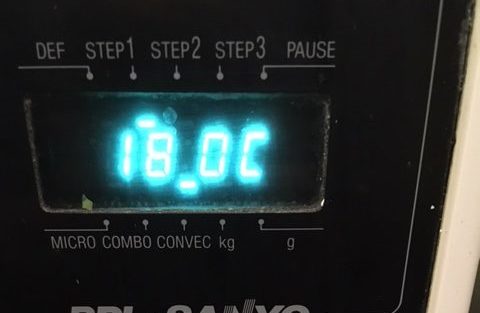
For other details regarding preheating your oven, read Importance Of Preheating Oven
2. Prepare the Baking Pan
- Always prepare the baking pan before beginning to mix the cake batter.
- Grease the baking pan lightly and then dust it with flour, tapping out the surplus. Greasing helps the cake to come out easily once it is baked.
- Then why flour is dusted? It is dusted with flour so that the oil/butter does not mix into the batter as the cake bakes, remains there till the end, finally helping the cake to slip out of the baking dish easily.
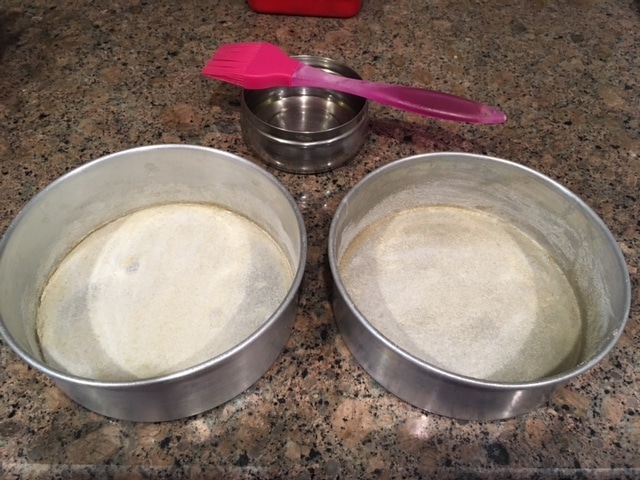
- Line the baking dish with Parchment paper. If the sides of the cake stick to the sides of the baking dish, you run a knife and loosen it. But if the bottom sticks then? Parchment paper ensures that your cake comes out easily. In place of parchment paper, you can even use butter paper or greased brown paper.
- If the cake requires long baking, then grease the baking dish and then line it with butter paper.
- Do both the methods or either depends on the recipe. Do as the recipe says but do not neglect this aspect.
3. Sift the Dry Ingredients
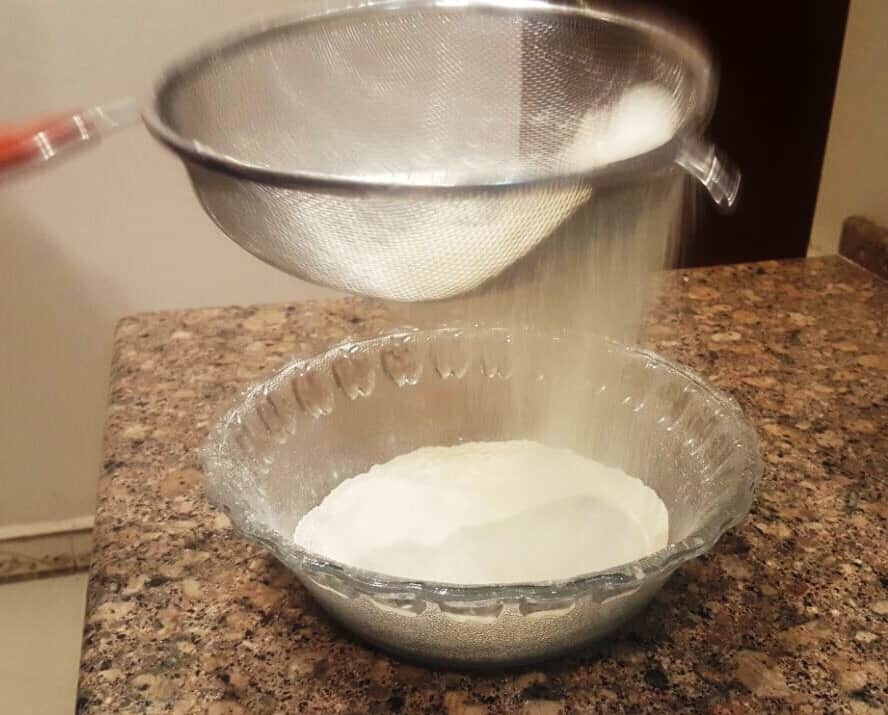
Sift The Flour... Lift The Air
-
- Sift the dry ingredients at least 3 times. This is the minimum number. In the case of whole wheat cakes, it is advisable to sift 8 to 10 times.
- Sifting is done not just to remove impurities but to incorporate air into the flour. Better aeration makes the cake light and fluffy. If you are making wheat cakes then it is all the more necessary. Sift wheat flour more than the all-purpose flour to get light wheat cakes.
- Always sift the flour with a little height to incorporate more air.
- For more information as to why sifting is done, read the Importance Of Sifting Flour.
4. Measure Accurately
Always measure the ingredients accurately. No approximation, please. Never use cups and spoons lying in your kitchen for day to day purposes.
Use weighing scale and standard measuring cups available for baking purposes.

5. Ingredients at Room Temperature
- All the ingredients to make a cake should be at room temperature, especially butter, curd and liquids unless mentioned otherwise in the recipe.
- Room temperature butter doesn’t mean melted or soft butter. For baking, take out the butter from the refrigerator a few hours before you start baking. It can be just half an hour or up to 2 hours depending on the weather. Butter is still in shape but not hard. When pressed with a finger, the finger doesn’t slide into it, rather a slight dent is left behind. And you will be surprised to know that even the room temperature butter is cold when touched. So, press it a little and see whether ready to be used or not.
- So, next time you plan to bake a cake and the recipe uses butter/milk so please take these out of the refrigerator accordingly.
Baking Powder and Baking Soda: These two, similar-looking ingredients, confuses a lot many people. They are different ingredients and cannot be replaced by each other. Please use as per the recipe only. For a clear understanding of these two and their differences read Difference Between Baking Soda And Baking Powder.
6. Cake Tin of the Correct Size
- Using a baking pan, too big or too small may lead the batter to overflow, burn around the edges and bottom, or sink in the middle.
- For example, if the batter meant for a 10" pan is poured into a 6" pan, then the cake will be much thicker and the middle won't get done before the top burns.
- If the pan size is not given then remember the basic rule of thumb which says that fill the pans halfway or just two-third only as cake batters rise to about half their original volume.
7. Never Beat the Batter
Do not beat the batter after the flour has been added otherwise the cake will turn out to be heavy. It is believed that the more you beat the better cake comes out to be. But beat what?
You should beat only the liquids like eggs or curd or butter etc. Beat these as much as you want but once the flour is added to it, just mix it lightly through cut and fold method, scraping the sides simultaneously.
8. Mix Nuts/Fruits in the flour
Most of the times, there is a complaint that dried fruits etc sink to the bottom of the cake and are not evenly distributed in the cake.
Nuts being heavier sink at the bottom. To avoid this, always dredge the nuts, dried cut fruits with a little flour before adding to the cake mixture.
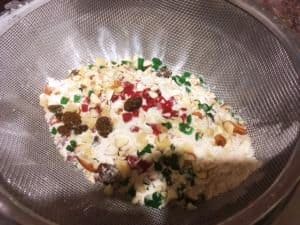
9. Using Essence/Flavourings
Always add essence/flavourings etc to the fat because fat absorbs flavour readily. So next time add vanilla/pineapple essence to the oil-sugar mixture.
10. For Flat Top
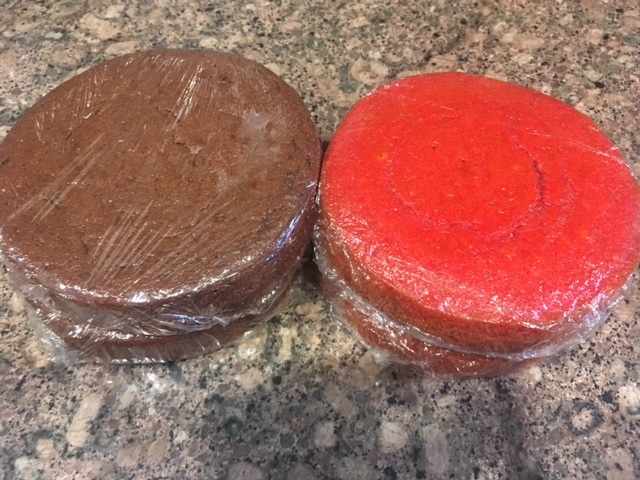
- Sometimes the cakes rise too much from the middle thus having a peaked top.
- To get a cake with a flat top,
- Scoop out a little batter from the centre of the baking pan towards the sides to form a small depression before putting it in the oven.
- Bake at a slightly low temperature. Try baking at 170 or 160 degrees C
11. Release Air Bubbles
Always tap the baking pan before putting it in the oven to release air bubbles, if any. In case you are using a glass pan then do not forget to spread a towel or some other napkin before tapping the pan.
12. Placing The Baking Pan
- Place the baking pan in the centre of the oven so that hot air can circulate around.
- Always preheat the oven with both the rods 'On'. But while baking use only the lower rod, switching off the upper one.
13. Do Not Open the Oven
Never open the door of the oven for the first 20 minutes of placing the cake in the oven. This disturbs the temperature inside the oven resulting in sunken or heavy cakes.
14. A Cake is Baked when
- it is well risen and has a good colour,
- Feels firm and springy when pressed with the fingertips.
- A toothpick/cake tester remains clean after being inserted into the cake.
- In the case of fruit cake, when no sizzling sound is heard when held fairly close to the ear.
15. When to Remove from the Baking Pan
- After taking out the cake from the oven, wait for 7-8 minutes before removing it from the pan.
- However, if baked the cake in disposable baking pans then let it be as it is. No need to remove it from there.
16. Use a Wire Rack
After taking out the cake from the baking pan, always keep it on a wire rack otherwise it will get soggy from the bottom. You get this rack with every OTG or Microwave oven. In the absence of this take a wire mesh, keep it on some container and keep your cake on it. Use any of the two, the purpose is that the bottom should be able to release hot air.
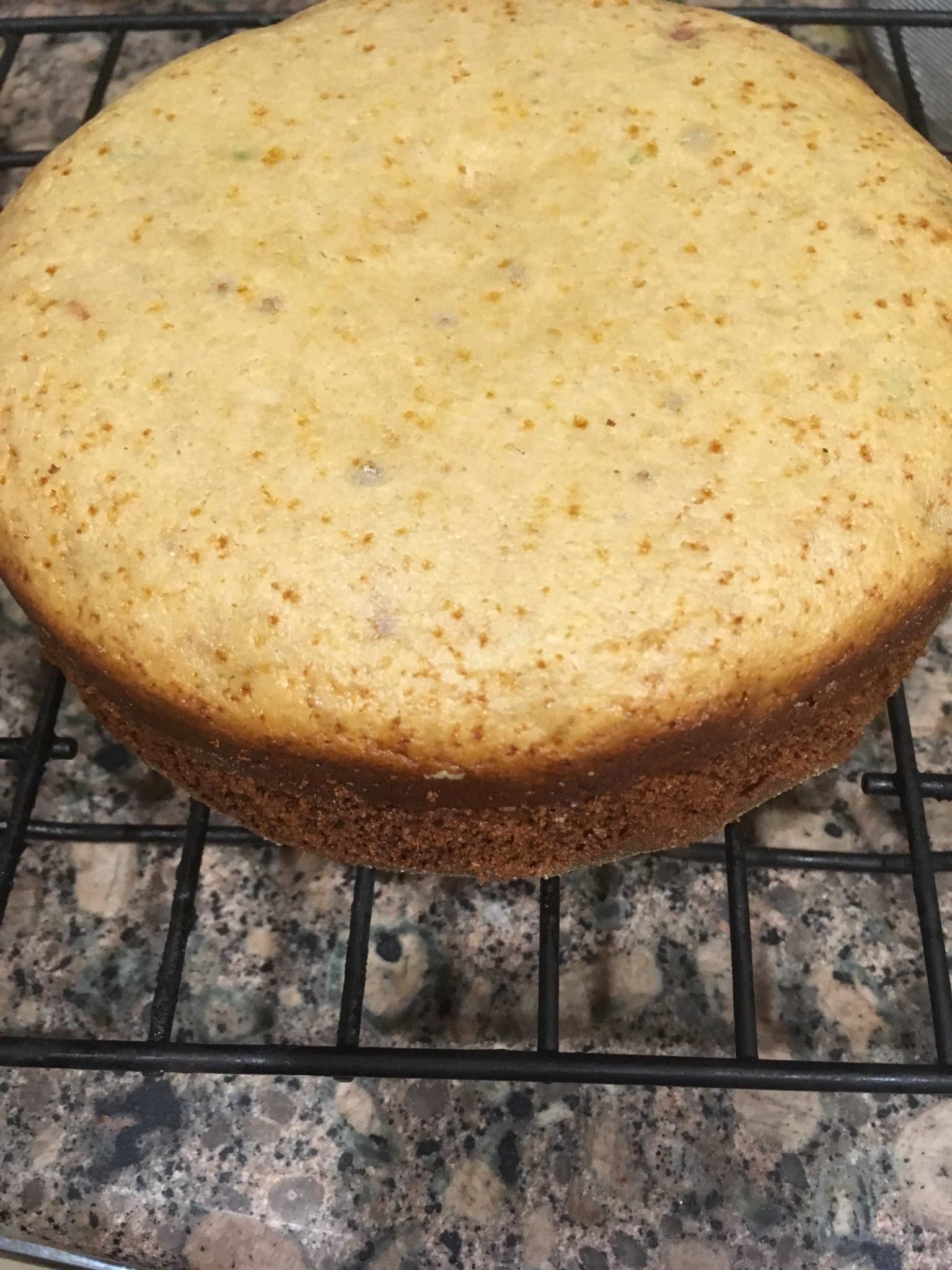
If you want to do icing/frosting on the cake then wait till it has cooled completely.
- Pin it for later read:
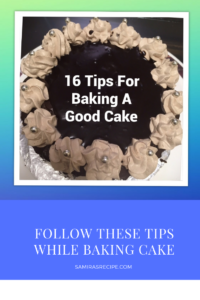
Let's Connect!
I hope you have liked this post on cake baking tips useful and you will definitely follow these tips while baking your next cake.
Thank you for reading this post. If you have liked this recipe then do let me know by leaving a comment below. Your feedback fuels my enthusiasm. You may share this post with your dear ones by clicking on the little buttons below. You may follow me on Facebook Pinterest Instagram(#samirasrecipediary) too. for latest recipe updates. Thank you!
Happy Baking...
My heartfelt thanks to the following Book and links as the above article is compiled based on the information provided therein.
- www.printasia.in
- thekitchn.com
- Gretchen's Bakery
- cookingstackexchange.com
- howstuffworks.com

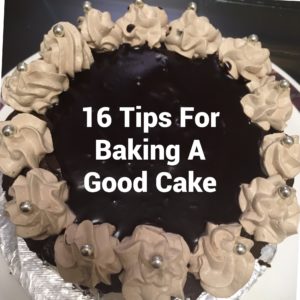

Samira loved every single detail of your tips ! Proud to have discovered you and your power of keeping the reader or the viewer engaged till the end !
Samira loved every single detail of your tips ! Proud to have discovered you and your power of keeping the reacter or the viewer engaged till the end !
That’s a big compliment Geeta ji. Thank you so much! All the efforts seem all the more worthwhile with such encouraging feedback. Thanks a ton.
Mam please tell me whenevr i bake a cake it rises beautifully but after sumtime only the middle portion sinks cumpltly… Whr m i malking a mistake??
Hi Rajni, this can be due to multiple reasons. Before taking out the cake from the oven check that it is fully baked. For this apart from inserting a toothpick you do another test also. Press it lightly with fingers and it should spring back indicating that itbis baked fully. If not then continue for some more time.
You may read my post on Cake Baking Mistakes, will find it useful.
https://www.samirasrecipe.com/cake-baking-mistakes/
My cakes bake perfectly but they are sticky on the top. Why.?
Possible reasons can be slightly underbaked or excessive sugar or moisture. Try keeping your cake in the oven for few more minutes even after the toothpick test. Ensure that sugar is fully dissolved. But if moisture then it’s out of control.
Hi how do we determine pan size most of the recipe dont mention it and even when we drop msg Theres no response probably they are unread due to their busy schedule
Hi Manisha… Normally you should fill the pan only half or maybe 2/3rd, not more than that. It should act as a rough guide. For 1 Cup flour, if the measuring cup=250 ml, then you require 6″round pan or 5″ square pan. Similarly, for 2 cups, 8″ pan is recommended.
Thanks for details, most ofy doubts are answered. One doubt is once unmould n place cake on wire rack shd we cover it or leave it open. Thanks
My pleasure Manisha. Cakes, you can leave as it is without covering. However, you must cover bread, buns etc with a moist cloth to keep the crust soft.
Thank u for sharing useful tips
My pleasure…
For making one kg cake what is the exact quantity of veg and non veg cakes Pl reply soon
For 1 kg cake, you require 250 gms flour, that is, approximately 2 cups.
Hello Samira
I am new to baking.i started making cake with wheat flour.started in cooker.
All cake turned out be perfect.
But when I tried with oven with cake tray.bottom layer and sides are hard.what cud be the mistake.
Thank you
Archana
Hi Archana! Welcome to the world of balking! While baking in the oven, keep the cake pan on the middle rack. Then preheat the oven with both rods ON but use only the bottom layer while baking, that is, switch off the top rod. Also, try baking at low temperature, at 170 degrees instead of 180. Hope this helps. Do let me know if this worked for you.
Very useful tips. I, being an amateur Baker , keeps on trying different recipes and have learnt some of your tips the hard way. If these tips are followed by heart, I am sure tasty cakes will be baked. Thanks a ton for sharing them.
Awww… Thank you so much dear.
Hello,
Do you conduct baking classes for 16 yrs girls . R u located in Mumbai.
Hello dear,
No, I do not take classes. Moreover to start with simple cakes, I suggest you follow you tube videos. Also there are some recipes on this blog which you can follow with ease.
Dear mam I want to know that should we take out the cake or anything as soon as it is done or wait for sometime before taking it out
Dear Suniti, wait for 5 to 7 minutes, till it becomes slightly cool, before inverting it on the wire rack.